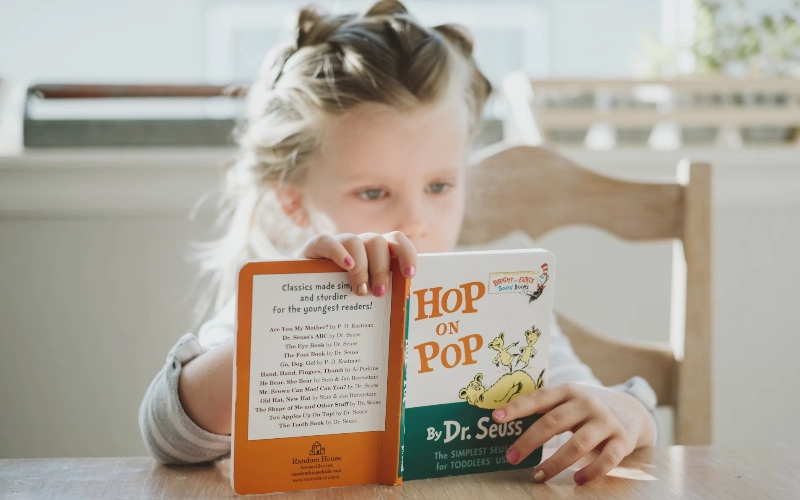Table of Contents
Children encounter difficulties in understanding a text. Starting in the third grade, every student should have developed reading skills. There are those who read more quickly and those who are less rapid but precise.
What most teachers and parents complain about is that children do not grasp what they read, do not understand the text, and consequently cannot memorize it.
How is it possible that there are all these difficulties relating to understanding the text? Don’t be alarmed by immediately thinking of a disorder; rather, think about which educational and teaching strategies could be effective based on the child’s learning style.
Reading is in itself an activity that requires a great deal of cognitive effort. It is quite common for children during primary school to concentrate all their energy on decoding the text, forgetting to pay attention to the words and their meaning. It is good for the teacher to give directives, advice, and a method to promote understanding of the text so that over the years they can be internalized and automated.
I have created and tested a method!
It is a versatile and useful method both for helping the child understand the text and for memorization. I now use it constantly with all the children, inserting or eliminating some steps to personalize it. Every child is different, so it’s right that there is always a certain degree of customization.
Let’s look specifically at the four phases of this method to help children understand and memorize the text!
1. Divide the text into small portions
The first thing to do before starting to read is to divide the text into small portions. The books offer important information that can be grasped at a glance! In fact, the paragraphs, the new line, the indentations, or the increase in the leading (the space between one line and another) indicate a change of topic and act as visual hooks that allow you to easily divide the text into small portions.
The newly identified portions will be highlighted with square brackets drawn in pencil along the profile of the text. If one of these is too rich, it is useful to divide it into two or three portions based on where the point is positioned. It is essential, during the first application of the method, to start with very short readings to avoid tiring the child too much!
2. Decode and understand
After dividing the text, the time has come to read it gradually. You will start from the first sequence, which will have to be read twice. The first reading simply serves to decode the words; the second reading will allow the child to focus on the meaning of the words and understand the text.
Each of the identified portions must be read twice, but I repeat: gradually! In fact, between one double reading and the other, a further passage must be inserted, which will give the child the opportunity to rest; furthermore, since the portions of text are very small, reading will be the child’s play.
3. Create a summary of the passage
When they are done reading a chapter or a page, they can practice summarizing what they read to help them easily remember and understand the details. If they don’t know how to do this yet, they can use an advanced summarizer tool to get some insights on how to summarize anything.
It is best to tell our children that going to a test is a bit like being an actor. The page of the book is our script, and we must prepare and understand it well in order to interpret it perfectly. The hook words are the personal touch of style, which, if accompanied by the right intonations, make the performance perfect!
At the end of this work, what will appear in the child’s eyes is a colorful and cheerful page; the structured work will have made time pass pleasantly without the heaviness and monotony of serial repetition.
Instead, with this method, reading, understanding, and memorizing become stimulating, structured, easy, and, above all, motivating moments. The child will be led to understand the information to create a mental scheme regarding the topics of the text, and this will facilitate study and memorization.
4. Color, underline, number
The child will have to choose a color and underline only the most important information. After selecting and underlining the important information, the portion of text will be given a number.
As the sequences are read, understood and underlined, the child will have to number the identified topics. What is this phase for? To make the child understand that a text is an ordered set of topics, the sequence will allow him to have a mental scheme with respect to the content of the text.
This means that in addition to understanding the text, memory will also be promoted; therefore, it will be easier to memorize. Obviously, each portion of text will have a unique and different color from the others.
This phase is truly fundamental: underlining is an invitation to understanding; in fact, in order to select the important information, I need to understand it; using colors means keeping the child’s motivation high, so attention will be natural and fervent.
5. Repeat out loud and use hook words
If the ultimate aim of the method is to facilitate understanding of the text, it is possible to conclude the work at the previous stage. Answering questions will be child’s play because the information is all there at your fingertips and can be found at a glance.
If, however, the child is asked to study and memorize the text, it is necessary to introduce this further step: after reading and underlining, the portion of the text will be repeated aloud two or three times, then we will move on to the next sequence and carry out the same job.
Between one topic and another, the child can insert hook words to note along the outline of the text. The function of these words is precisely to connect to the next topic! At the end, the entire text will be repeated twice aloud in its entirety.
Obviously, for the method to be truly effective it must be well applied! It is essential that there is initial accompaniment, the adult must show how it is done and orient the child, encouraging progressive autonomy. Over time, the child will learn to do everything on his own, to be totally autonomous and the positive results will activate a virtuous circle in him made up of motivation, security and positivity.

Arslan Hussain, founder of The Different Languages, is an experienced translator passionate about languages and cultures. Through his website, he shares his knowledge and love for different languages, making learning accessible and enjoyable.

